Wine Club Exclusives
HANNA Winery's diverse wine portfolio showcases varietals inspired by the classic regions of Bordeaux, Burgundy, Europe, and Italy, all meticulously cultivated in Sonoma County across five renowned AVAs. For our esteemed wine club members, we reserve the finest selections—crafted masterpieces by our Winemaker, Jeff Hinchliffe. These exclusive offerings include some of the region's rarest varietals and most innovative winemaking techniques, providing an unparalleled tasting experience.
HANNA's Bismark Moon Mountain District Petite Sirah and Petit Verdot are cultivated at one of Sonoma County's highest vineyards, perched at an impressive 2,600 feet along the Mayacamas Mountain Range. This elevated site lies within the unique microclimate of the Moon Mountain District, where temperatures remain more consistent compared to the valley floor’s dramatic fluctuations.
The vineyard’s greatest influence comes from its enriched volcanic soil. Rich in rhyolite, these soils contain higher potassium levels than most, contributing to elevated acidity in the resulting wines. This distinct terroir shines through in every bottle, delivering a truly remarkable expression of HANNA's mountain-grown varietals.
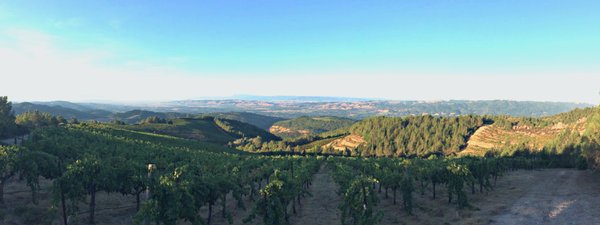
“Rhyolite has the same chemical composition as granite. The difference is that granite cooled off slowly underground and Rhyolite erupted, changing the crystalline structure of the rock. Only two-and-a-half percent of exposed continental rock world wide is Rhyolite.
This volcanic soil has a direct and demonstrable influence on grapes grown there. One of the most significant is measurable in the grapes, and ultimately in the wine. Both the titratable acidity and the pH are high. This is consistent, year after year, and runs counter to what one finds in most vineyards, where high acidity results in low pH and low acidity results in high pH.
The primary reason this inverted relationship exists at Bismark is the soil. Soils derived from Rhyolite are high in available potassium (K). In most vineyards K, an essential macronutrient, is routinely added every season via fertilization to make up for what the grapes mine out of the soil. At Bismark however, we have not added K in over 20 years and did so before only in ignorance.” - Jeff Hinchliffe
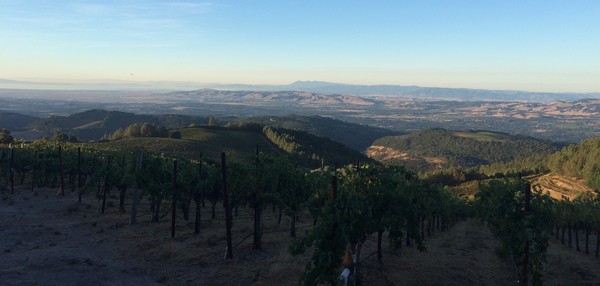
Bismark Petite Sirah Methode Carbonique
The Ambrosia of Spontaneity
|
It’s the 2019 harvest, we have a great crew of interns, Jessica Crumpton (now with Constellation), Lucia Rodriguez Gargantini (back in Argentina), and last but not least Abigail Petersen (now editor at Sonoma Magazine). Throw in our Enologist, Doris Michue (now a winemaker at Korbel) and current winemaker Marti Quan and you have a diverse, talented, and spirited group. Abby is also a home winemaker, and early in harvest brought a sample of her wares. As is de riguer in the wine biz, the sample was poured and thrust before my nose with nary a bit of explanation. |
 |
The tasting was blind, but my pineal eye was not.
The worm hole opened, and I was cast back to 1995, back to Redwood Valley and the vineyard I planted to Syrah on the cobbles of the Rocky Creek Ranch.
Abby’s wine’s distinctive aroma reminded me of that 1995 Mendocino Syrah and the technique I used to make it.
“That’s a Carbonic wine” I spurted out, “I haven’t made one since 95. Let’s make one this year! Let’s use the Bismark Petite Sirah.”
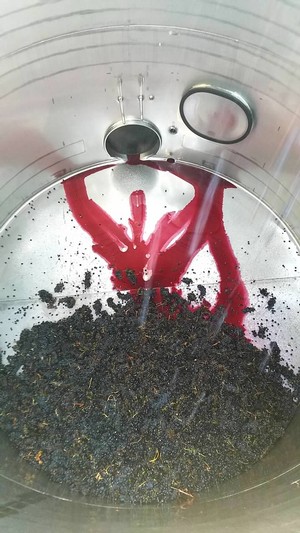 |
Yes, our winemaking is a methodical, well thought out and planned process. But not this time. So, what is a Carbonic wine? Well shucks, you just purge a tank with carbon dioxide to remove oxygen and load the whole cluster fruit through the top. Down it plops in a pile. Seal it up (with a vent of course) and go back to work on Sauvignon Blanc. The grapes lie in repose and ferment from the inside out. To quote from the very droll Principles and Practices of Winemaking, “Intact berries are surrounded with Carbon dioxide and allowed to have partial fermentation by the grapes own glycolytic enzymes. The wines produced are lower in tannin and with a distinctive aroma contribution.” Think strawberries, pomegranate molasses, and violets; but, through a Yellow Submarine filter. And just to be clear, this doesn’t taste like, doesn’t smell like and definitely ain’t the typical rustic, boozy, large hewn Petite Sirahs. It's redolent of other-worldly fruit, luscious and round, low in alcohol, with only a kiss of oak. It has this alluring je ne sais quois aroma that defines Methode Carbonique. And since we make it every other year or so, you won’t have to wait 24 years for the next one. By Winemaker, Jeff Hinchliffe |
HANNA Reserve Alexander Valley Saint Macaire
Nestled in the northeastern corner of Sonoma County’s AVAs, HANNA’s Alexander Valley Red Ranch Vineyard spans 100 acres east of Healdsburg. This exceptional site is home to an array of Bordeaux red varietals, including the rare and nearly forgotten Saint Macaire.
Alexander Valley is renowned for its hot climate, making it ideal for cultivating thick-skinned red grapes. Last September’s 104-degree temperatures highlight the region’s characteristic sweltering heat. HANNA’s vineyard benefits from its placement on moderate to steep slopes, which provide excellent drainage for the vines.
The vineyard’s soils, a blend of Clough gravelly loam and Laughlin loam, perfectly balance sun exposure, drainage, and water retention. These nutrient-rich soils create optimal conditions for grape cultivation, allowing HANNA’s Bordeaux varietals to thrive and express the unique character of Alexander Valley.
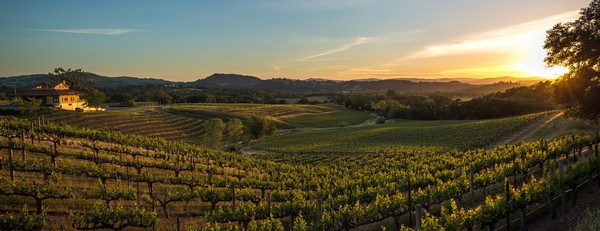
Saint Macaire, a heritage Bordeaux variety from Belle Epoque France, nearly vanished in the European Phylloxera blight of the 1880s. The 2015 HANNA Reserve Saint Macaire was the first of it’s kind released in the United States, and one of very few produced internationally. HANNA Winery grows a half-acre of Saint Macaire at its Red Ranch Estate.
HANNA’s introduction to Saint Macaire came in 2011 in a discussion between HANNA’s winemaker Jeff Hinchliffe and their Bordeaux red consultant, whose small data set suggested that the forgotten cultivar had a unique chemistry, one that had potential for tremendous color and expansive, velvety tannins. Intrigued, HANNA acquired bud wood courtesy of a highly regarded Napa winery. In March of 2012, 600 vines were planted at HANNA’s Red Ranch Vineyard in Alexander Valley. “Researching the grape’s history in California was telling,” shares Hinchliffe. “It was studied by early viticulturalists, but simply never recommended for planting - low yielding, prone to sunburn, too tart. Robust color aside, few virtues were noted. It made a poor first impression and fell into obscurity.”
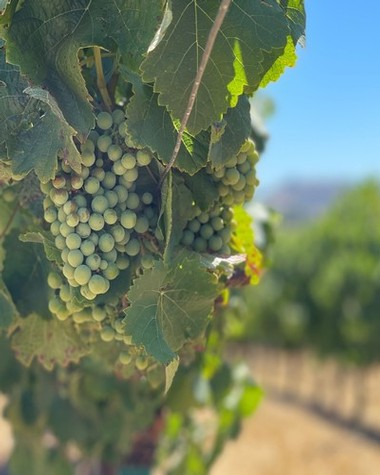 |
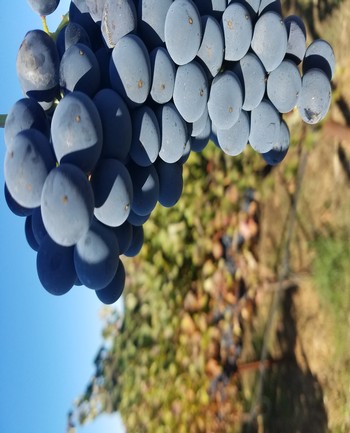 |
Purple Reign in Times of Change
How this grape of superlatives remained nearly unknown is a mystery. We have been making it for 10 years now and it continues to astound.
Saint Macaire is the darkest, most aromatic, most intense wine we have made. Inured to heat. It maintains color, retains brightness and aroma, and will astound you with its transcendence.
And Prosaic it’s not: Genius hidden by audacity While anodyne cousins thy manor rents We lost you in Belle epoque France, thought jejune in new world too a lifted veil and now we see, Opacity is veracity, depth is deep Your mood is indigo, your stain insane Your anchors dig and the sweet earth is tilled With Ginseng, Sassafras the cellars filled How did the diplomas miss those aromas? Health hack tannin its through the roof Dry and bright and to the tooth No sugar daze no hoochy haze This bronco bucks That climate change Right off the range
By Winemaker, Jeff Hinchliffe
The HANNA team is proud to showcase these remarkable club exclusives to all our members. Thank you for being a part of our HANNA family. Here’s to a year filled with joy, celebration, and, of course, extraordinary wine!
Members enjoy access to our featured club exclusive wines and shipping included on orders of six or more club exclusive wines.
UPS Ground Shipping Code: EXCLUSIVE
Offer Ends 1/14/25